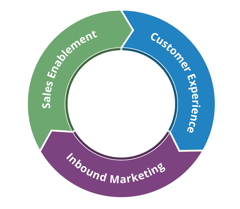The content you create doesn’t need to stop working once you’ve posted it, as you can easily make the most out of your content by giving it a new purpose. You can turn it into an engaging video, organically promote the content through email and social media, or use it to contribute your expertise to the industry. Below are seven strategies to help give your high-performing blog content a new purpose on your website and help you drive conversions.
1. Format Title and Headings
Be sure the title and the headings throughout the post describe the subject and content succinctly. Most people skim these headers before deciding to read the post. Search engines use bold, italic, or HTML header tags to more accurately index the content. In HTML, titles are usually formatted as h1 tags and subheadings as h2. Sections beneath the subheadings usually use h3 tag formatting. Make it easier for search engines to index your site by following a formatting protocol.
2. Use a Call to Action (CTA)
A call to action (CTA) is essential for guiding your website visitors through the buying journey. Maybe some of your website traffic is composed of people who want to do business with you but don’t know how because there are no clear next-step markers on your site. CTAs provide a clear sign to take that next step. The user has now transitioned from a prospective customer to a lead by clicking on the CTA and filling out the provided form.
3. Promote Your Content Organically
Send out notifications of your new blog posts if you have an email list and a link to them. Use header formatting and images to spur interest in your customers. Put links to the blog posts on your website, write short introductions to your social media accounts to announce the new blogs, and insert a direct link to the post.
4. Fine-tune Keyword Search Strategies
Compare what your website visitors use to find your site to the keywords you’re using in your blog. If any are coming up short, consider writing blog posts to boost traffic to your website or incorporate the keywords into your website’s text.
5. Consider a Paid Ad for a Blog Post or Article
If you’ve uploaded content that could attract new readers or users, use advertising dollars to promote it. You can do it through search engines or social media ads.
6. Convert it to Video
It’s not a big stretch to turn a blog post into a video to post on popular video hosting sites like Instagram, Vimeo, and YouTube. You’ll need to distill the article to put it into slides and select the most suitable template in PowerPoint.
Go through each paragraph of the post and reduce it to a single sentence that will become an individual PowerPoint slide. To finish, use the narration tool in PowerPoint to tell the story. If you’re shy around a microphone, you can use text-to-speech software to make the voiceover, some of which is free and remarkably authentic.
7. Contribute to an Industry Blog
Look for organizations in your discipline that have blogs or newsletters. If you meet their requirements, submit your material. Your blog post or article will reach a different audience and gain an essential backlink to your site.
If you're interested in discussing your current content marketing strategy and how you can further align that with your brand and voice, we invite you to speak with one of our inbound marketing experts today. You can also check out our email content marketing explainer video if you have any questions about content marketing.



__Square.png?width=250&height=250&name=Marketing_Hub_(1)__Square.png)




.png?width=250&name=diamond-badge-color%20(1).png)
